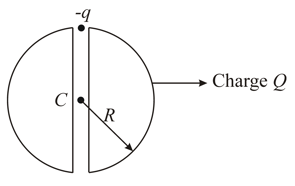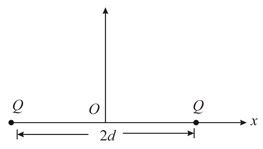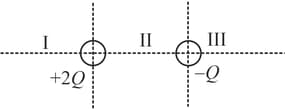We have two electric dipoles. Each dipole consists of two equal and opposite point charges at the ends of an insulating rod of length The dipoles sit along the -axis a distance apart, oriented as shown in the figure.
Their separation The dipole on the left:

Their separation The dipole on the left:


Important Questions on Coulomb's Law and Electric Field
In a uniformly charged dielectric sphere, a very thin tunnel has been made along the diameter as shown in figure. A charge particle having mass is released from rest at one end of the tunnel. For the situation described, mark the correct statement(s). (Neglect gravity.)

Consider two identical charges placed distance apart, along the -axis (see figure). The equilibrium of a positive test charge placed at point midway between them is,

For the situation shown in the figure (assume the length of the dipole) mark out the correct statement(s).


